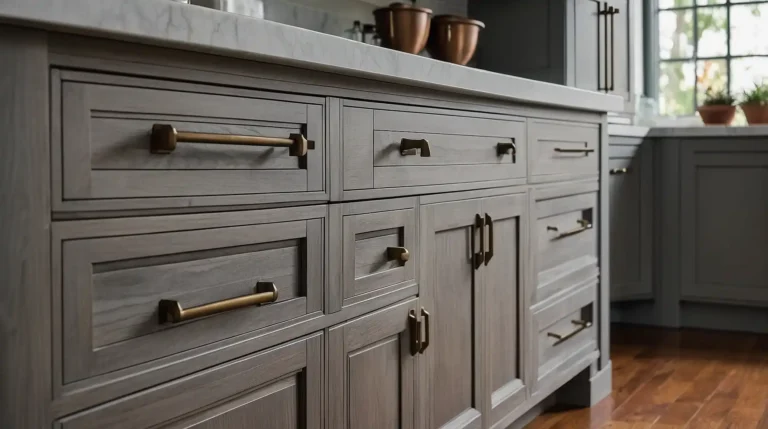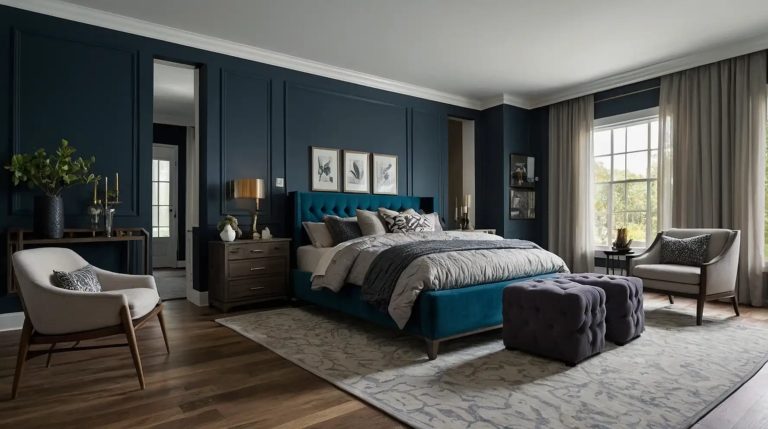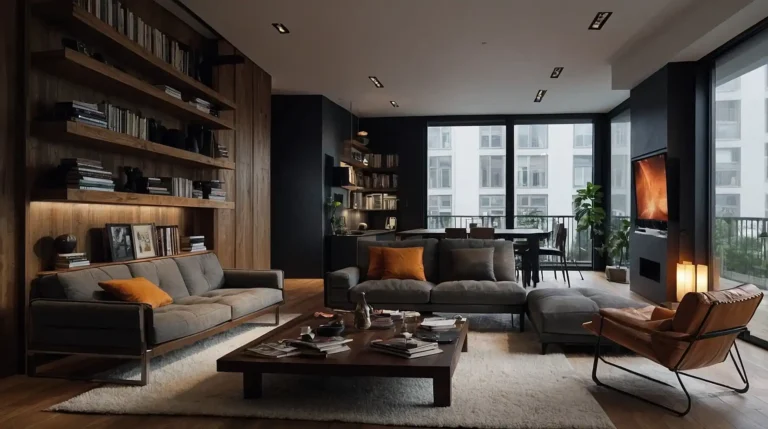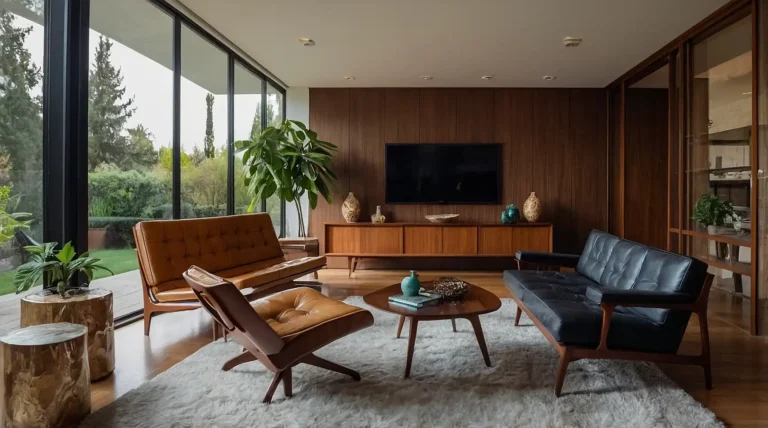21 Easy DIY Canvas Painting Ideas That Make Beginners Look Like Pros
Canvas painting offers a perfect creative outlet even if you’ve never held a paintbrush before.
The blank canvas might seem intimidating, but with simple techniques, you can create stunning artwork for your home.
Most beginner-friendly canvas projects require minimal supplies and basic techniques that anyone can master.
The satisfaction of creating something beautiful with your own hands makes this hobby especially rewarding.
These 21 canvas painting ideas range from abstract to representational, all designed specifically for beginners who want impressive results without years of practice.
Grab your supplies and discover just how creative you can be with a little guidance and inspiration.
1: Ombre Sunset Gradient
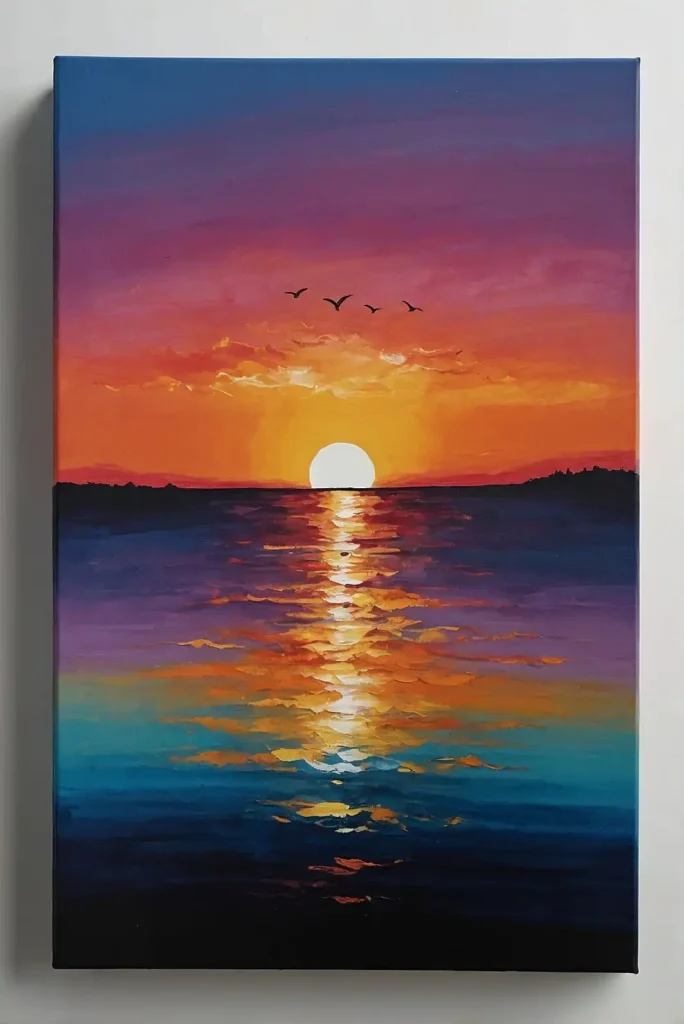
Create a stunning sunset effect by blending colors that gradually transition from one to another.
This technique forgives imperfect brushstrokes while creating impressive depth.
Begin with a dark blue at the top, blend into purples, then pinks, and finally oranges at the bottom.
Mist your canvas with water before painting to keep colors workable longer and achieve smoother transitions between hues.
2: Silhouette Landscape
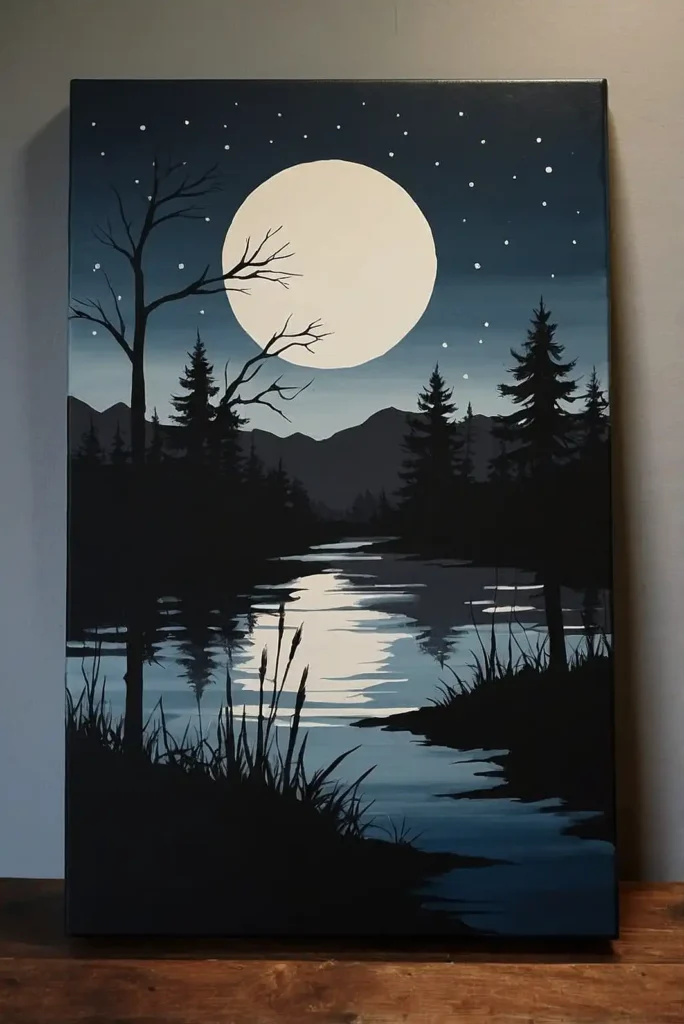
Paint a solid color background like a sunset or night sky, then add black silhouettes of trees, mountains, or cityscapes.
This high-contrast approach creates dramatic results with minimal technical skill.
Use reference photos to trace simple outlines or create freehand shapes.
The stark contrast between your colorful background and black foreground elements makes even simple shapes look intentional and artistic.
3: Abstract Geometric Patterns

Create a striking modern piece by painting clean-lined geometric shapes using painter’s tape to achieve perfect edges.
This technique produces professional-looking results even for complete beginners.
Apply tape in intersecting patterns, paint between the lines, then remove tape when dry for crisp edges.
Limit your palette to 3-4 complementary colors for a cohesive, designer-worthy result that looks intentional rather than random.
4: Watercolor Galaxy
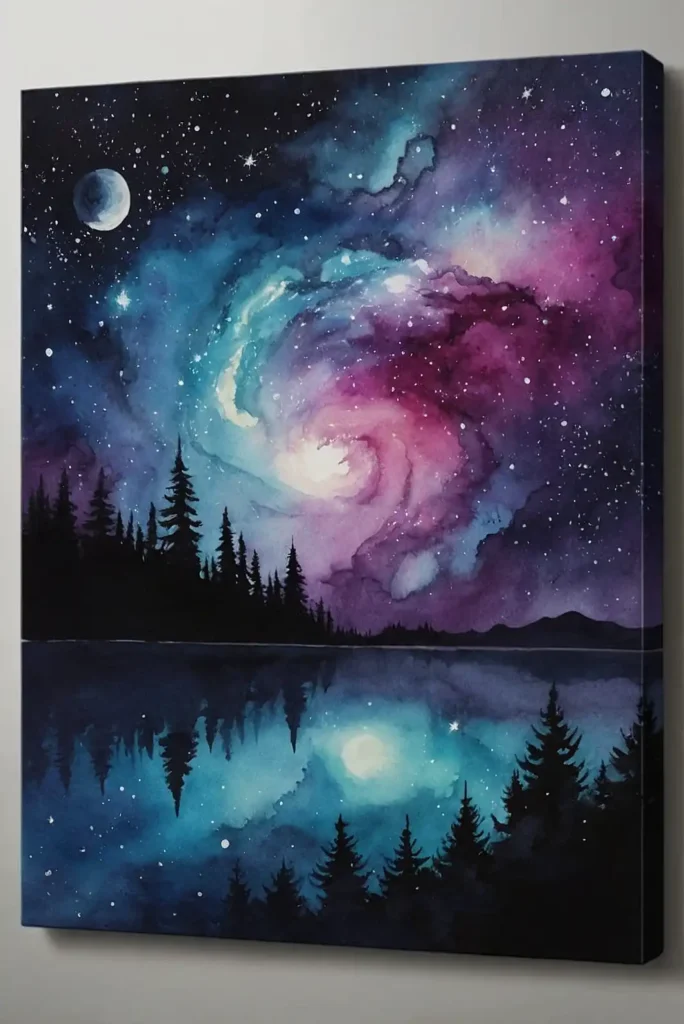
Achieve a dreamy cosmic scene using watered-down acrylic paints to mimic watercolor effects.
The organic, blended nature of a galaxy scene forgives imperfections and embraces happy accidents.
Begin with a black background, then add swirls of blues, purples, and pinks.
Finish by splattering white paint for stars using a toothbrush or flicking a paintbrush for varied star sizes.
5: Simple Floral Silhouettes
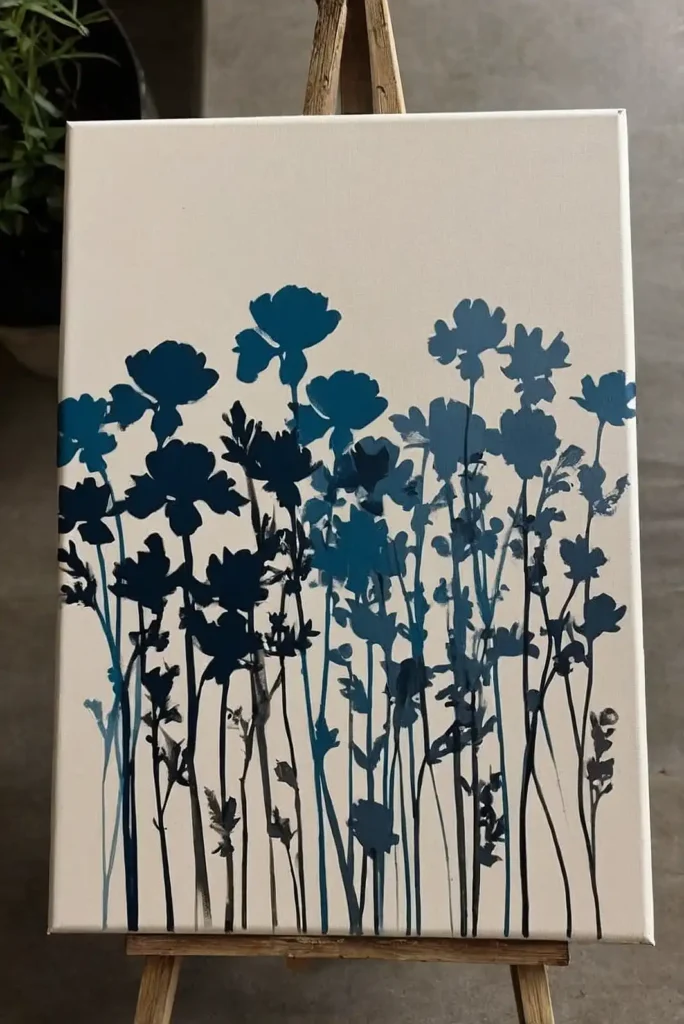
Paint basic flower shapes in a single color against a contrasting background for a modern, graphic look.
This approach simplifies complex natural forms into accessible shapes for beginners.
Focus on the distinctive outlines of recognizable flowers like daisies, tulips, or poppies.
The monochromatic approach eliminates the pressure of perfect shading while still creating visually impactful artwork.
6: Word Art or Quote
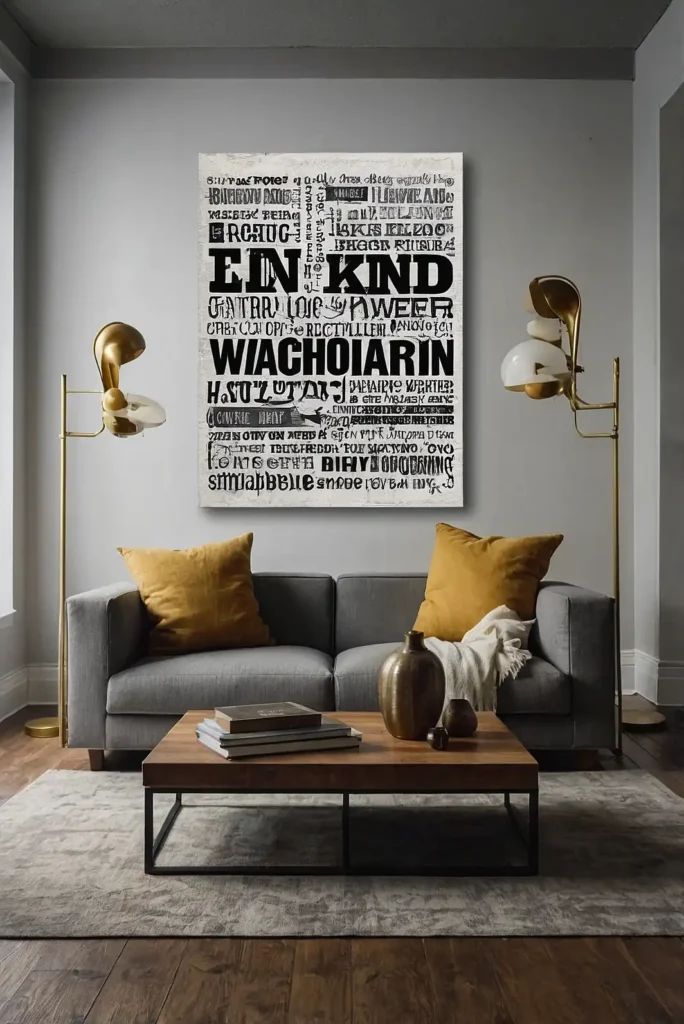
Transform meaningful text into personalized wall art by painting your favorite quote, word, or phrase.
This project combines typography and painting for a highly customizable result.
Use letter stencils if you’re not confident in your freehand lettering skills.
Create interest by varying font styles or adding simple decorative elements like hearts, stars, or floral motifs around your chosen words.
7: Tape-Resist Abstract
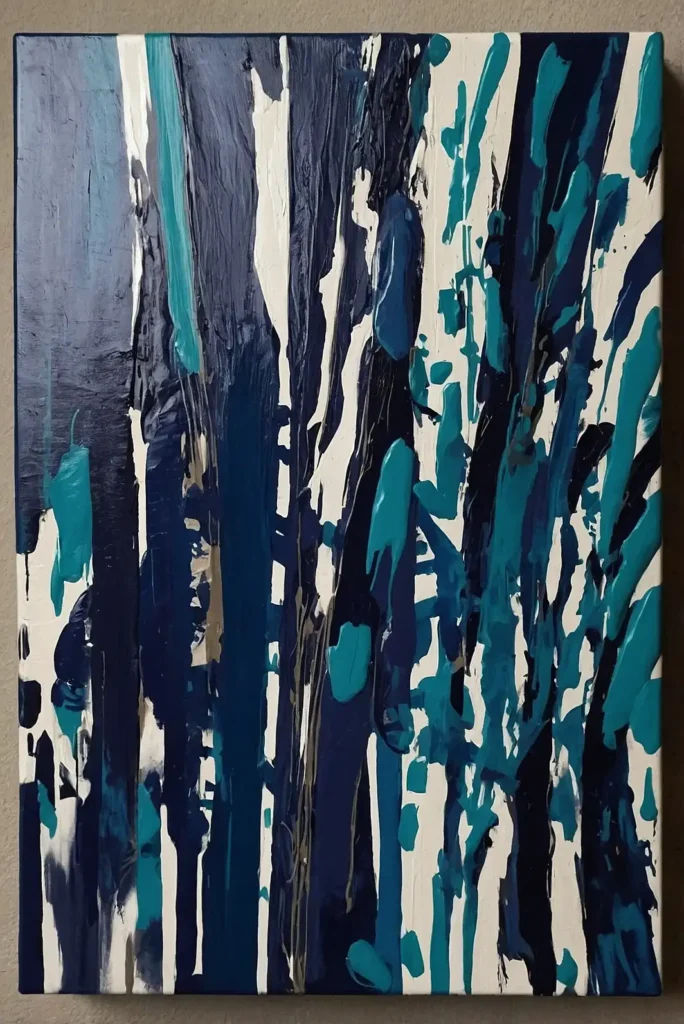
Create intriguing linear designs by applying painter’s tape in random or planned patterns, painting over it, then removing the tape to reveal clean lines.
This technique produces professional-looking geometric abstracts.
Experiment with overlapping tape patterns and multiple paint layers for added complexity.
The clean edges created by the tape provide structure to an otherwise free-form painting approach, perfect for beginners.
8: Minimalist Landscape
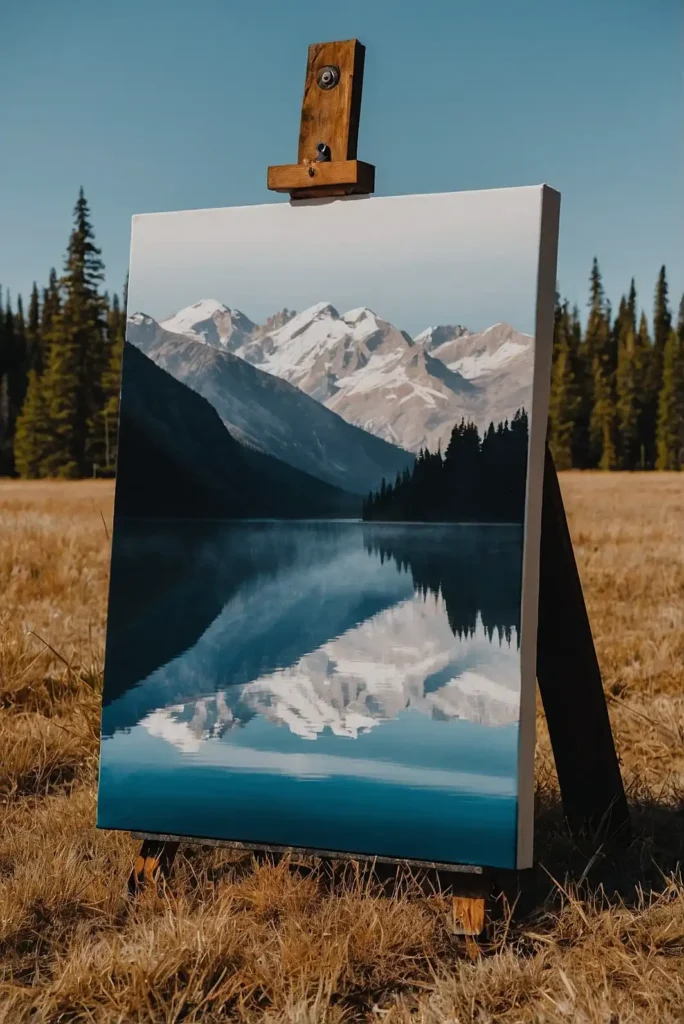
Paint a simple horizon line with limited elements like a few trees, mountains, or a small boat.
This pared-down approach creates striking artwork that doesn’t require complex techniques.
Use a limited color palette of 3-5 colors for a cohesive, modern look.
The simplicity highlights your careful composition rather than technical skill, making it perfect for novice painters.
9: Fingerprint Dandelions
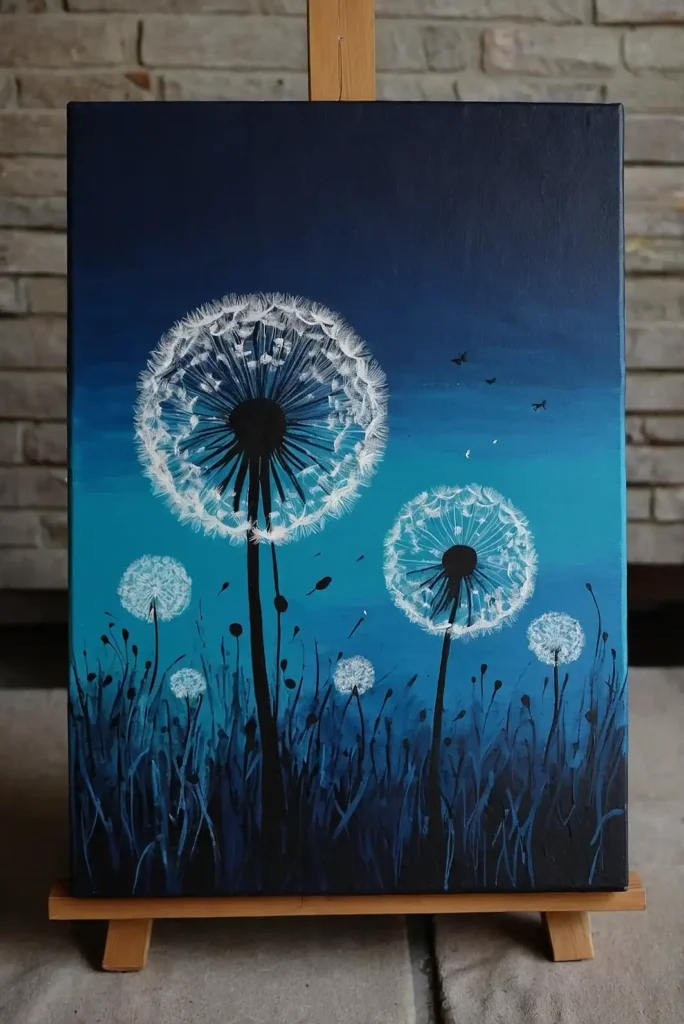
Create whimsical dandelion shapes using fingerprints for the seed heads and simple brushstrokes for stems.
This playful technique requires zero brush skill while producing charming results.
Press your fingertip in white paint, then stamp around the top of each stem to create the fluffy seed head.
The organic, imperfect nature of fingerprinting creates more natural-looking results than precise brushwork would.
10: Paint Pour Art

Explore fluid art by mixing acrylic paints with pouring medium and creating flowing, marbled effects.
This technique relies on paint chemistry rather than brush skills for stunning results.
Combine your mixed paints in a cup, then pour onto canvas and tilt to create flowing patterns.
The unpredictable nature of poured paint creates one-of-a-kind abstract compositions, with no two pieces ever looking identical.
11: Monochromatic Tree
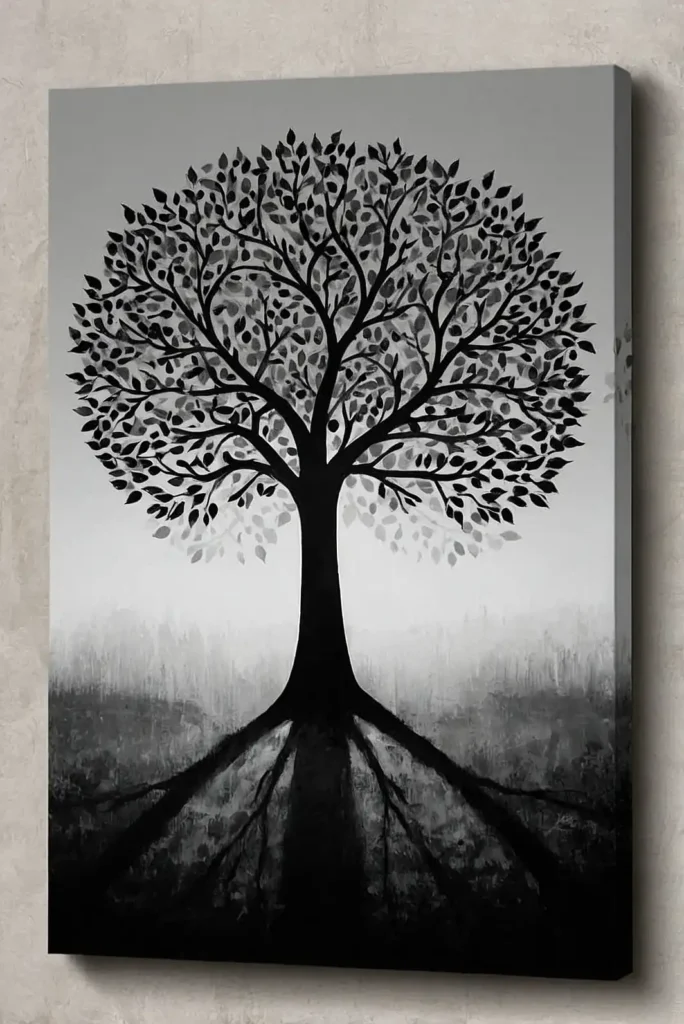
Paint a simple tree silhouette using varying shades of a single color for a sophisticated, cohesive look.
This limited palette approach simplifies color decisions while teaching basic shading principles.
Start with a light background, then add your tree shape in a middle tone, followed by darker accents.
The tonal variation creates depth and dimension without requiring complex color mixing or blending techniques.
12: Simple Leaf Prints
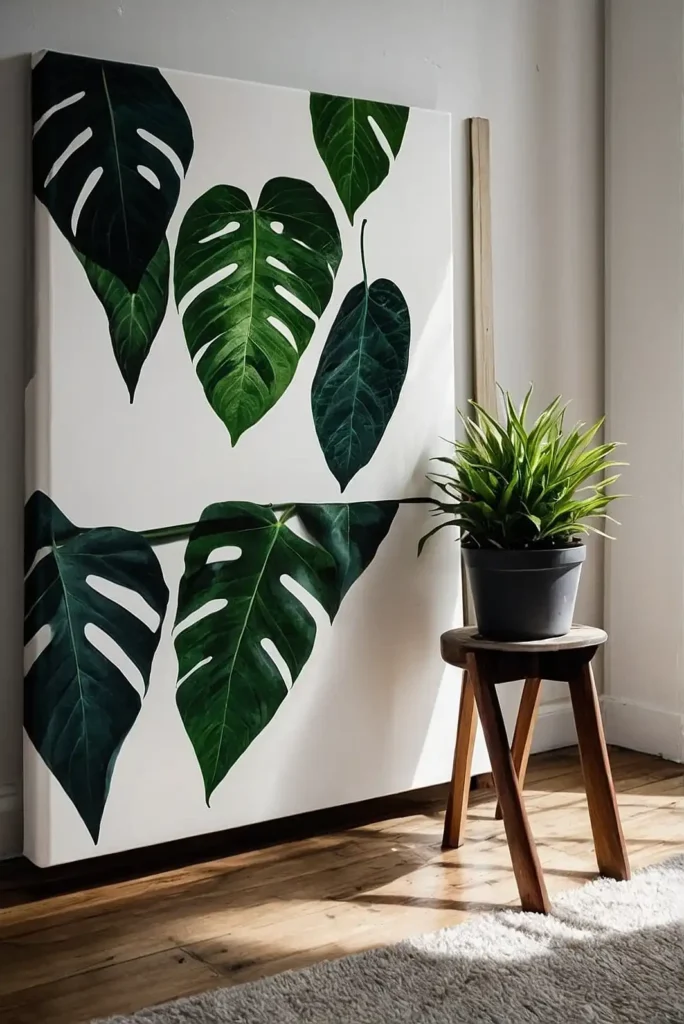
Apply paint directly to real leaves and press them onto canvas for nature-inspired prints.
This technique borrows from printmaking to create detailed impressions without requiring painting skills.
Collect leaves with interesting shapes and pronounced veins for the best prints.
Arrange in a pattern or random composition for a botanical artwork that captures nature’s intricate details without needing to paint them.
13: Masking Fluid Starry Night
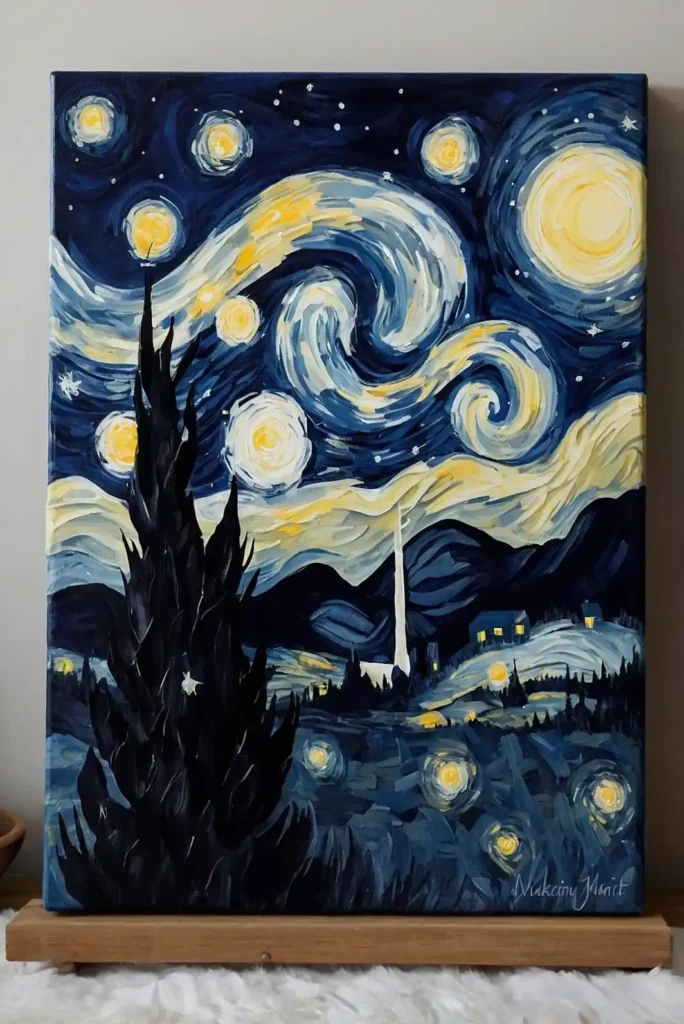
Create twinkling stars and a moon using masking fluid on a dark background. This resist technique reserves white space while you freely paint a night sky around it.
Apply masking fluid with a toothpick for small stars or brush for larger elements, then paint your sky.
Remove the dried masking fluid to reveal pristine white shapes against your cosmic background.
14: Layered Mountain Range
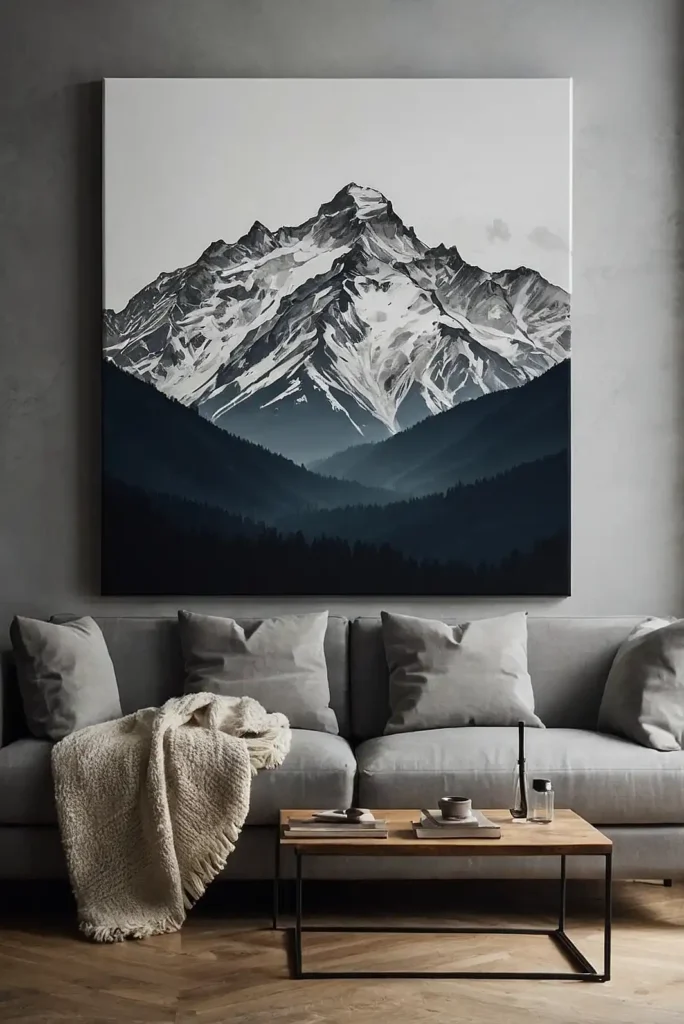
Paint simplified mountain ranges in graduating colors from foreground to background to create depth.
This technique teaches basic perspective through color and overlap rather than complex drawing.
Start with darker colors in the foreground, then use progressively lighter shades for distant mountains.
The simple shapes and systematic approach create surprisingly realistic landscapes without technical rendering skills.
15: Splatter Paint Abstraction
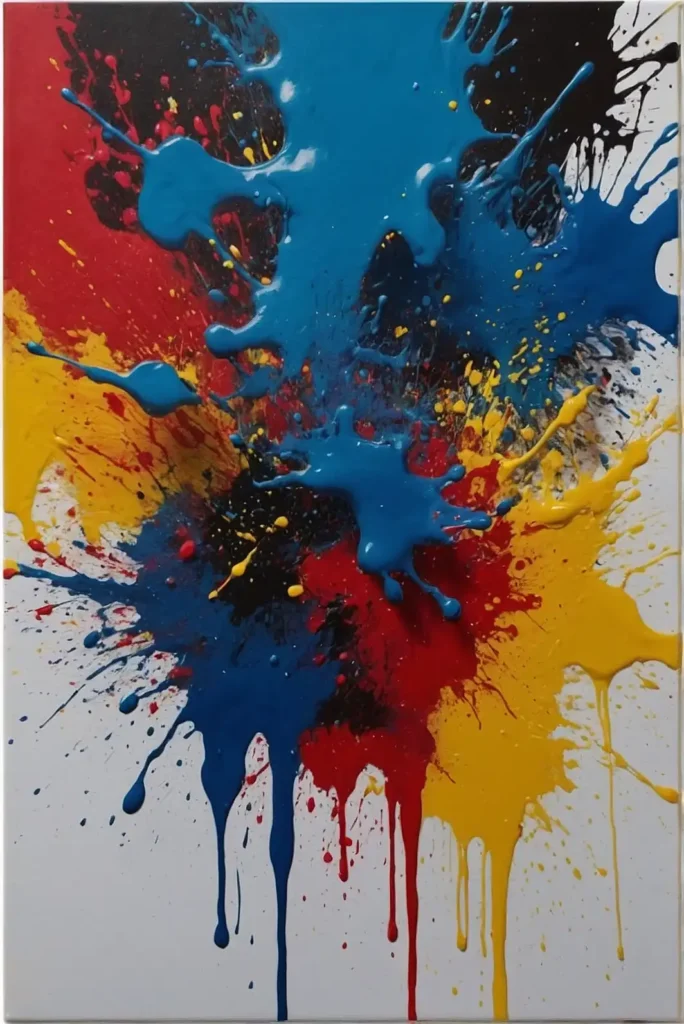
Channel your inner Jackson Pollock by flicking, dripping, and splattering paint across your canvas.
This expressive technique embraces randomness and energy rather than precise control.
Use different tools like toothbrushes, chopsticks, or stiff brushes for varied effects.
The dynamic, action-oriented approach produces energetic compositions that look deliberately artistic rather than accidental.
16: Stenciled Pattern
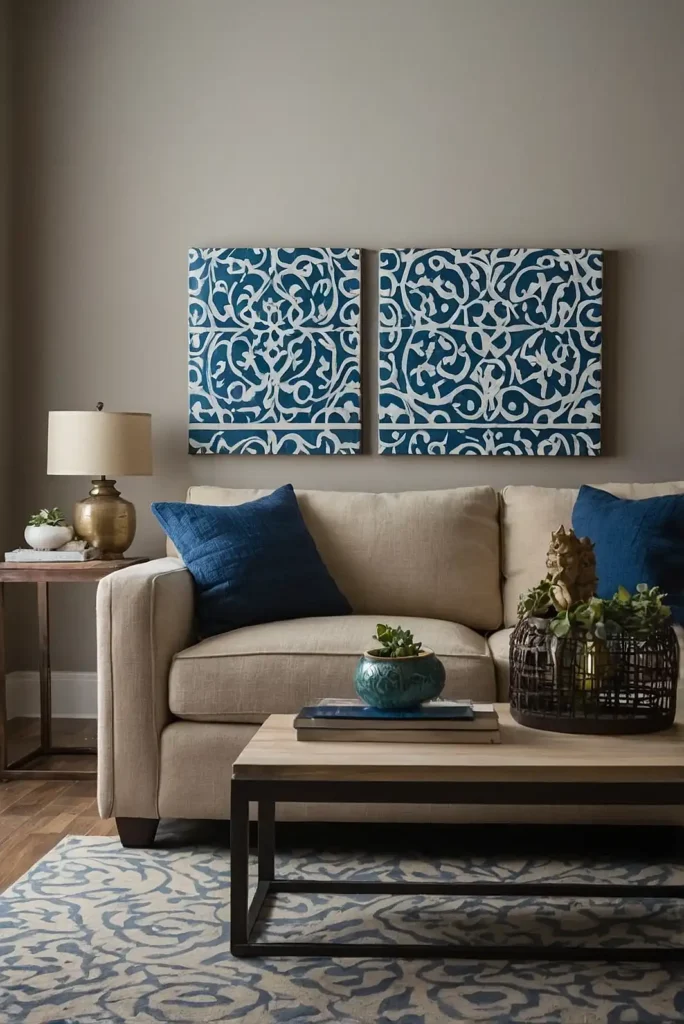
Create precise, repeating designs using purchased or homemade stencils with acrylic paint.
This technique ensures consistent shapes without requiring freehand skills.
Secure your stencil with tape, then dab paint through openings with a sponge or stiff brush.
The regularity of repeated elements creates cohesive, intentional-looking compositions that disguise beginner status.
17: Easy Beach Scene
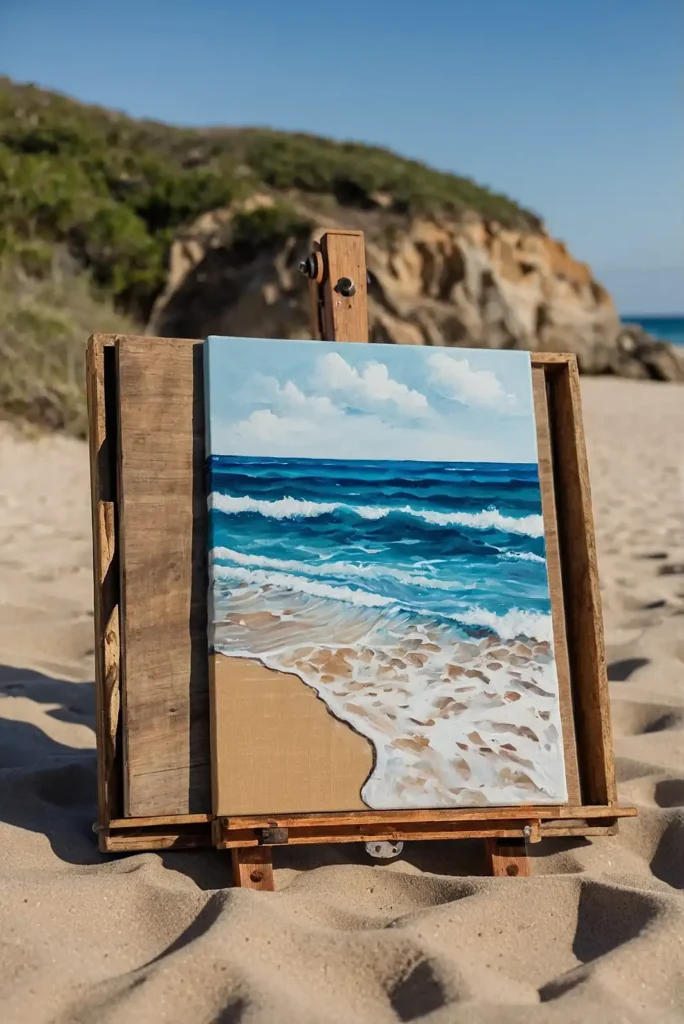
Paint horizontal stripes representing sky, sea, and sand, then add simple details like an umbrella or palm tree silhouette.
This structured approach simplifies a complex scene into manageable sections.
Start with blue sky at the top, turquoise water in the middle, and tan sand at the bottom.
The clear divisions between elements create an organized framework for adding simple details that enhance without complicating.
18: Bubble Wrap Printing
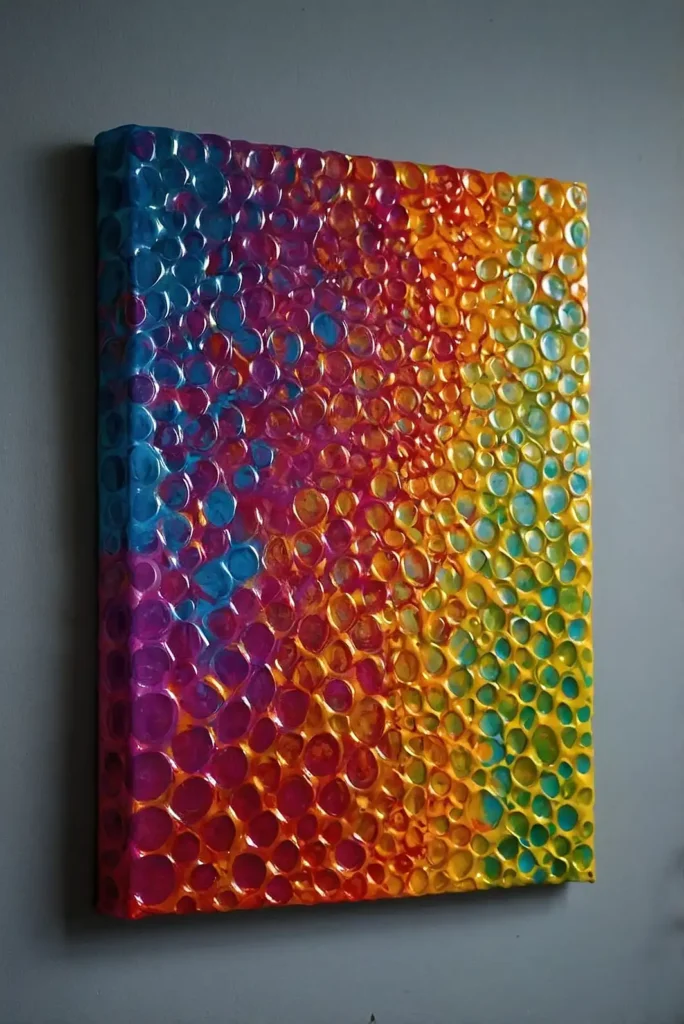
Press paint-covered bubble wrap onto canvas to create fascinating circular patterns and textures.
This unconventional tool produces consistent geometric patterns without painting skill.
Apply different colors to separate bubble wrap pieces for varied effects.
The uniform texture creates a sophisticated pattern that looks deliberately planned rather than randomly created.
19: Alcohol Ink Petri Effect

Drop alcohol inks onto a prepared canvas coated with isopropyl alcohol to create cell-like organic patterns.
This chemistry-based technique creates intricate details no brush could achieve.
Watch as the inks spread, separate, and create cell formations when they interact.
The scientific reaction produces stunning organic patterns that appear far more complex than the simple process that created them.
20: Negative Space Painting

Paint around a simple object placed on canvas, then remove it to reveal its untouched silhouette.
This technique creates precise shapes without requiring you to paint their outlines.
Use leaves, feathers, or cutout shapes as temporary stencils.
The crisp edges around your negative space create striking contrast that draws attention to your composition’s thoughtful simplicity.
21: Diptych or Triptych Series

Create a series of 2-3 related canvases using a simple technique like color gradients or abstract shapes.
This multi-canvas approach elevates basic techniques into a more sophisticated presentation.
Maintain consistent elements across all canvases while varying others slightly.
The intentional grouping transforms individual simple paintings into a cohesive art installation with greater visual impact.
Conclusion
Start with the idea that most resonates with you, gathering basic supplies and setting aside time to enjoy the process without pressure.
Remember, every artist began as a beginner—your creative journey starts with a single brushstroke.


